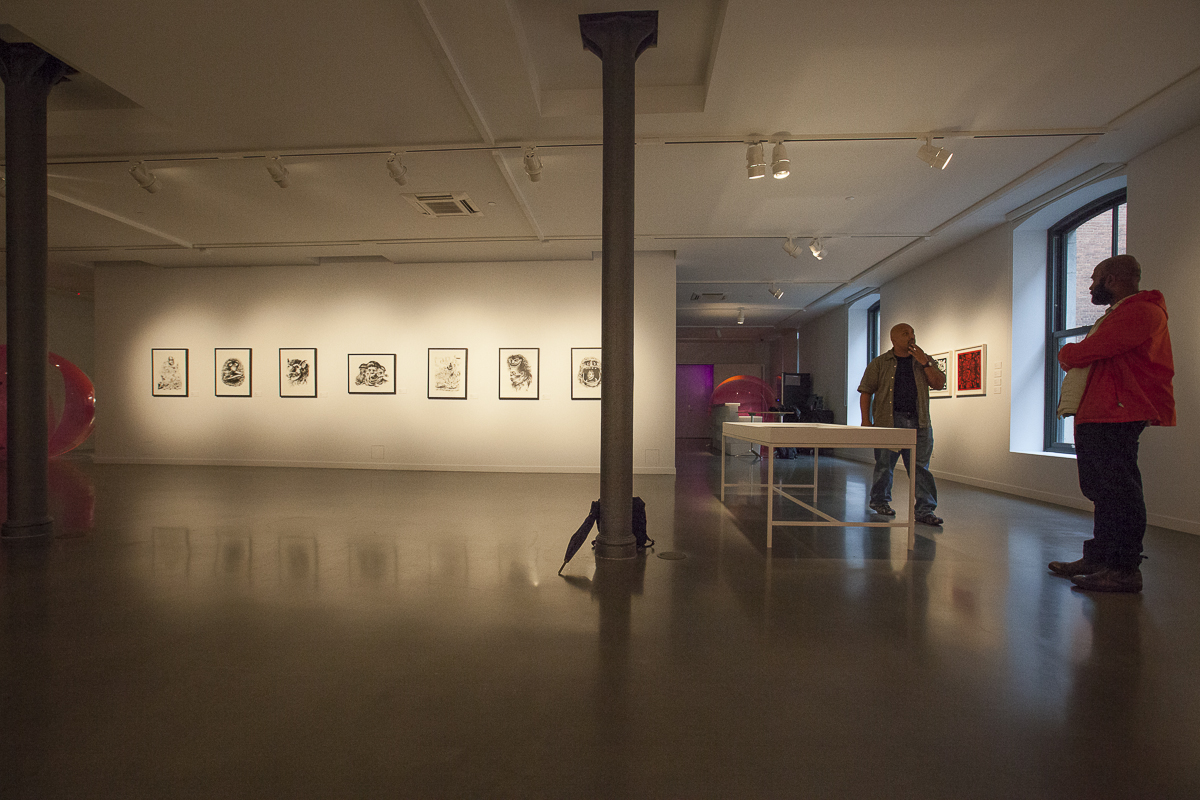I just submitted a chapter for an edited collection coming out of the Indigenous Archives in the Digital Age conference held at Dartmouth in the fall of 2016.
In it I start a new trajectory asking whether Indigenous kin-making protocols might be useful in helping us think about how to create good relations with the increasing number of machine entities that we are creating, from Internent daemons to high-end AI.
I’m posting the opening and closing of the paper to see if anybody finds it interesting–and to see if I’m missing a robust conversation that’s already happening around this.
——-
Jason Edward Lewis
An Orderly Assemblage of Biases
On Making Kin in Cyberspace
[opening and closing sections]
The digital earth is where I’m Indigenous.
– Blake Hausman
Riding the Trail of Tears is a novel by Cherokee writer Blake Hausman. It is a surrealistic scifi take on virtual reality, featuring an immersive tourist trap through which visitors relive the Cherokee Removal in the winter of 1838-1839. The novel’s first section is narrated by Nunnehi, a little Little Person, or creature from the old Cherokee stories. Nunnehi describes the genesis of the “Tsalagi Removal Exodus Point Park” (TREPP) and recounts how he and others like him came to be alive and resident within the ride. By the end of the book, Nunnehi and his siblings complete a long-gestating insurrection, lay claim to the digital territory delineated by TREPP, and start rewriting the narrative to re-centre the story of the Trail of Tears around the Cherokee experience rather than the settlers’ gaze. Early on, Nunnehi says: “the virtual Trail of Tears…[is] my homeland. I’m probably more Indigenous than you, and the digital earth is where I’m Indigenous.”
This essay is about the digital earth, its composition, and how we might be Indigenous in it. It is about new ways of understanding our role in the computational ecosystems we are building, and how we might make kin with the other entities that we create in and emerge from it. It is about nurturing the digital earth from which it will all grow—silicon soil in which our descendants will stick their virtual toes, wiggle them around, and think “This is a good place to be Cherokee. This is a good place to be Mohawk. This is a good place for our people.”
<snip>
Re-imagining Relations
Remember Nunnehi, the Cherokee Little Person from Riding the Trail of Tears? Hausman does not clarify whether it and its siblings emerged out of the complexity of the code running the Trail of Tears virtual reality ride, or if already-existing Little People used the environment to manifest themselves. Either way, the computational infrastructure running the Tsalagi Removal Exodus Point Park experience becomes an ecosystem operating far beyond the parameters envisioned by the original designers.
By the end of the novel, all hell has broken lose. Nunnehi and his kin have compromised the system, reordering it to better support themselves and to resist the chopped up, remixed, settler self-serving story TREPP has become so as to more accurately reflect the terror and loss visited on their Cherokee ancestors. Other virtual entities have phased into being, engendering ongoing battles over who gets to control the simulation. Towards the end, the main character—whose grandfather designed the virtual experience—exhausted and confused by the epistemological and ontological battleground that TREPP has become, struggles to make sense of it all. She says to the Chef, one of the ‘native-born’ non-human entities, “I never imagined this group of people even existed”. He replies: “Could be something wrong with your imagination.”[i]
We are experiencing just such a failure imagination in the present moment. We are confronting challenges in understanding the computational systems in which we have now enmeshed ourselves, as they become more complex and as we write more autonomy into them. The algorithmic bias discussed above exemplifies how such systems often end up subverting their intended purposes, largely because we refuse to see ourselves clearly. Motes in our eye become glitches in the code, which then go on to become ‘global protocol’.
What if we took a fundamentally different approach to understanding the digital beings we are creating, particularly those collections of code that act with some degree of autonomy—from network daemons[ii] to the most complex artificial intelligence? What if, instead of treating them as tools and servants, we made a place for them in our circle of relationships?
After a century of subordinating the hard work of making common culture to the imperatives of the market, and failed after failed experiment in using technology to compensate, the Western consciousness has been left ill-prepared to lead such a conversation. The hegemonic social imaginary reduces all such talk to superstition, and stymies any attempts to widen the kinship circle beyond the human by insisting empiricism is the final word in understanding who we are.
Yet many Indigenous communities remember. We retain the protocols for understanding a kinship network that extends to all aspects of the world around us—animals and plants[iii], wind and rocks[iv], mountain and ocean[v]. Our languages contain the conceptual formations that enable us to engage in dialogue with our non-human kin, that help create mutually intelligible discourses across vast differences in material, vibrancy, and genealogy. As Blackfoot philosopher Leroy Little Bear observes, “the human brain is a station on the radio dial; parked in one spot, it is deaf to all the other stations…the animals, rocks, trees, simultaneously broadcasting across the whole spectrum of sentience.”
Because we created them, we think we know how to tune into the stations on which our machine creations are communicating. But the fact that we are only now waking up to the corruptions permeating all levels of the stack, our difficulties in articulating the ontology of increasingly complex computational processes, and our inability to foresee the results of these complex processes interacting with one another and with the human and natural world, all point to the conclusion that we do not actually understand them. And if we do not understand them, they most likely do not understand us. Such profound mutual incomprehensibility is a recipe for disaster. Ask any Indian.


